This report presents Year One (2010-11) school level achievement and attendance outcomes and case study findings from fall 2011 that focused on school leadership and instruction.Thirteen schools were included in the first year of Philadelphia’s Renaissance Schools Initiative(2010-11). The analyses provide the most rigorous evaluation available regarding the impact of the reform model.First-year results are positive. However, because the outcomes analyses were conducted using data from only the first year of the Initiative, it is too early to determine whether the preliminary results summarized here will be sustained over time.Findings:In the 11 K-8 schools, the school-level effect sizes associated with participation in the Renaissance SchoolsInitiative for both student achievement and attendance ranged from 1.0 to 2.25, which are substantially greater than is typically seen in educational research.Descriptive analysis of student achievement and attendance reveal no observable changes at Renaissance High Schools in Year One of the Renaissance Schools Initiative, while the Comparison High Schools have continued to improve slightly over the six-year study period.There was no statistically significant difference in either student achievement or attendance between the K-8 Promise Academies and the Charter-managed Renaissance Schools. Both sets of schools significantly out-performed the Comparison Schools in terms of increases in student achievement and attendance.This report also highlights promising District policies and school practices that could impact future turnaround efforts in Philadelphia or in other locales. These include the following:1) The Promise Academies received extra resources and attention from the District, which placed them in the spotlight and generated greater public interest in their progress.2) The teachers’ union supported the Renaissance Schools Initiative by signing a collective bargaining agreement that was consistent with the principles of the reform effort.3) Principals and teachers felt part of ‘something big.’4) Principals built their own teams of teachers through site selection.5) Principals built systems that promoted and reinforced teacher learning and growth.6) Data and student work were used to assess learning and make instructional decisions.7) Principals and teachers exercised professional judgment to adapt the curriculum, within the parameters of the Promise Academy Way.During 2011, along with the departure of CEO Arlene Ackerman and extreme budget cuts, Renaissance Schools, particularly the District-run Promise Academies, were challenged by: 1) A late hiring window, with little time for orientation. 2) Significant staff and programmatic reductions as a result of District cut-backs. 3) High levels of teacher turnover. 4) Over-use of corrective reading and math programs intended to increase student achievement. 5) Over-reliance on direct instruction, particularly around prescribed curricula.
Philadelphia’s Renaissance Schools Initiative: 18 Month Interim Report
Eva Gold , Michael A. Norton , Deborah Good , Stephanie Levin
Date: February 2012
Related Publications
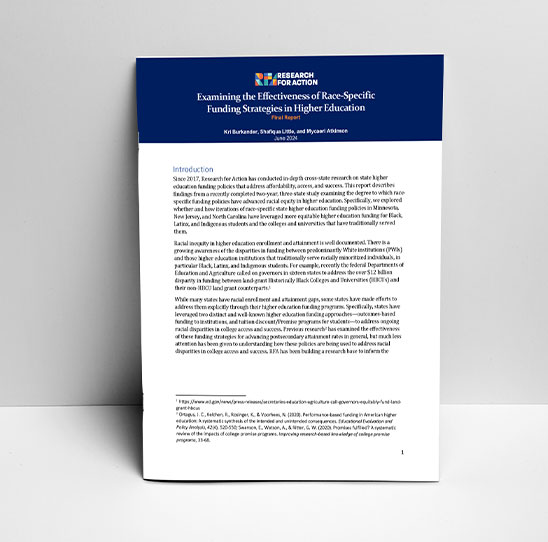
Publication
Examining the Effectiveness of Race-Specific Funding Strategies in Higher Education
Kri Burkander, Shafiqua Little, Mycaeri Atkinson
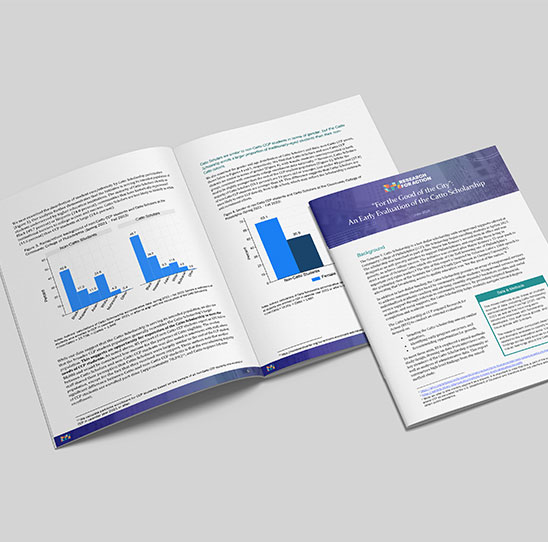
Publication
“For the Good of the City” An Early Evaluation of the Catto Scholarship
Kri Burkander, Karin Gegenheimer, Alita Robinson
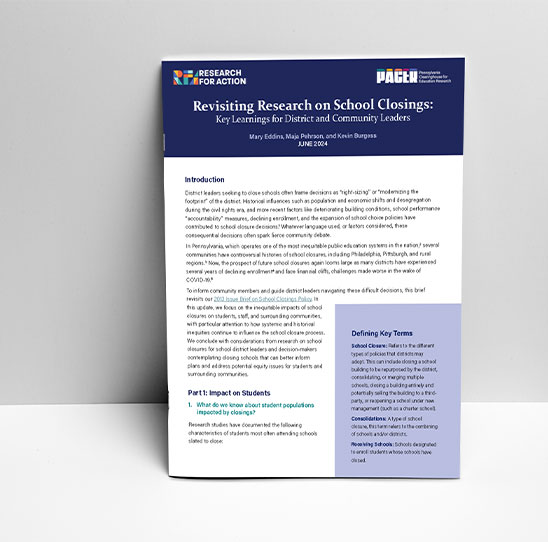
Publication
Revisiting Research on School Closings: Key Learnings for District and Community Leaders
Mary Eddins, Maja Pehrson, Kevin Burgess
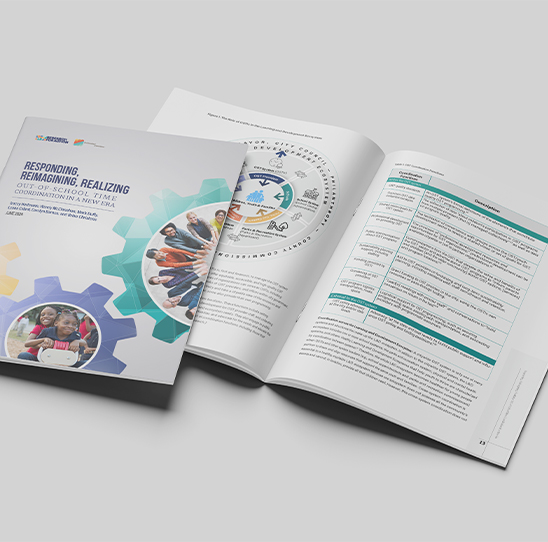
Publication
Responding, Reimagining, Realizing: Out-of-School Coordination in a New Era
Tracey A. Hartmann, Wendy McClanahan, Mark Duffy, Leana Cabral, Carolyn Barnes, Ph.D, Brian Christens, Ph.D
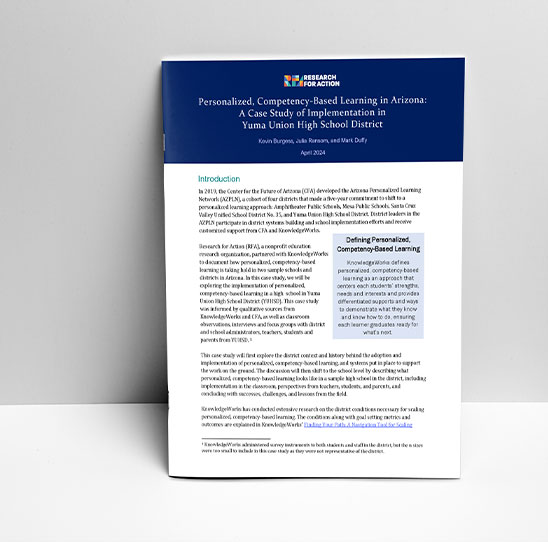
Publication
Personalized, Competency-Based Learning in Arizona: A Case Study of Implementation in Yuma Union High School District
Kevin Burgess, Julia Ransom, Mark Duffy

Publication
Personalized, Competency-Based Learning in Arizona: A Case Study of Implementation in an Elementary School in Santa Cruz Valley Unified School District 35
Julia Ransom, Kevin Burgess, Mark Duffy
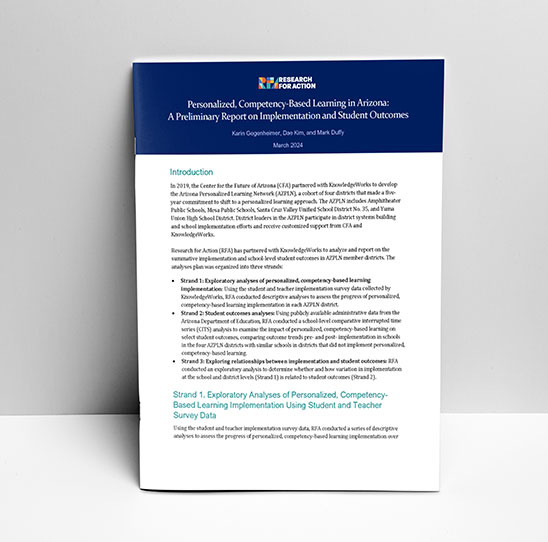
Publication
Personalized, Competency-Based Learning in Arizona: A Preliminary Report on Implementation and Student Outcomes
Karin Gegenheimer, Dae Y. Kim, Mark Duffy
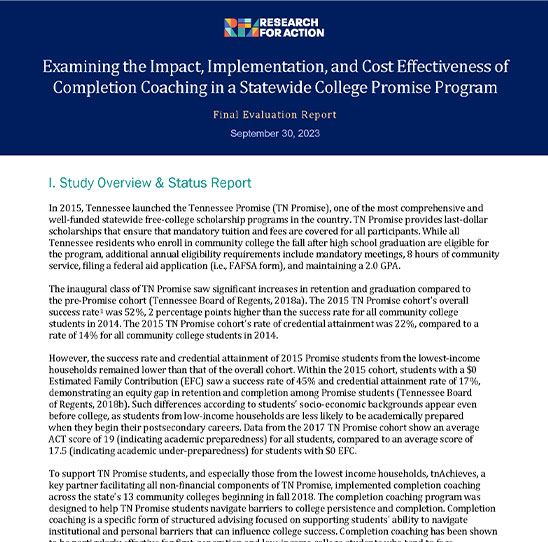
Publication
Examining the Impact, Implementation, and Cost Effectiveness of Completion Coaching in a Statewide College Promise Program
Dae Y. Kim, Karin Gegenheimer
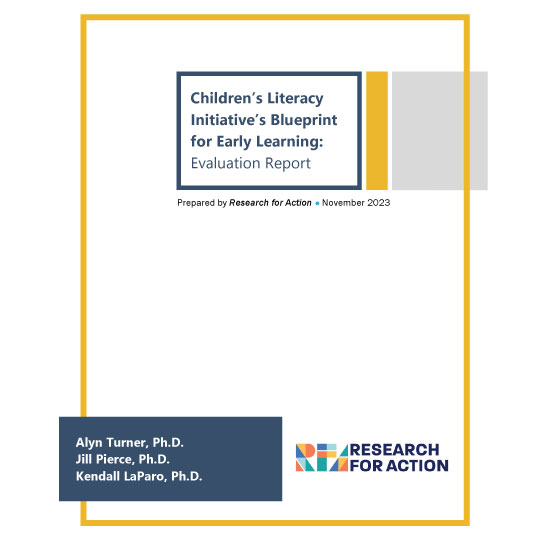
Publication
Children’s Literacy Initiative’s Blueprint for Early Learning: Evaluation Report
Alyn Turner, Jill Pierce, Kendall LaParo

Publication
Virtual Approaches Hold Promise for Expanding Afterschool Art Programming
Wendy McClanahan, Tracey A. Hartmann
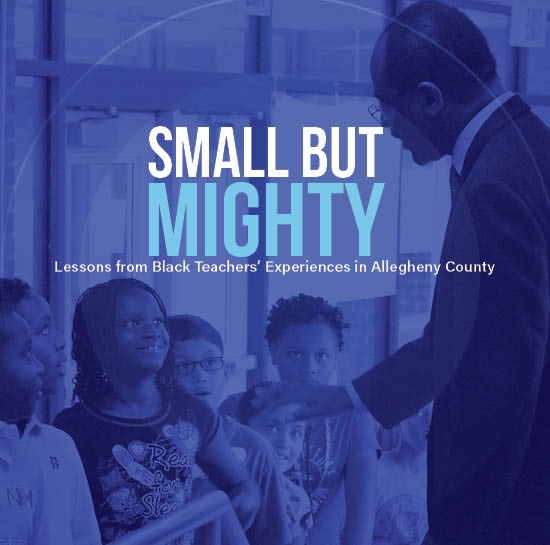
Publication
Small but Mighty: Lessons from Black Teachers’ Experiences in Allegheny County
Siettah Parks, Kevin Burgess, Leana Cabral, Mary Eddins, Alita Robinson
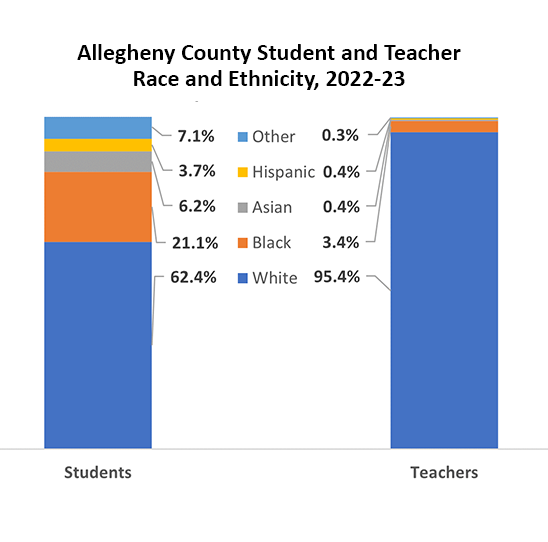
Publication
Allegheny County Teacher and Student Demographics: 2022-23 Update
Mary Eddins, David Lapp, Anna Shaw-Amoah